These motors were made for walking
- PMID: 32472639
- PMCID: PMC7380674
- DOI: 10.1002/pro.3895
These motors were made for walking
Abstract
Kinesins are a diverse group of adenosine triphosphate (ATP)-dependent motor proteins that transport cargos along microtubules (MTs) and change the organization of MT networks. Shared among all kinesins is a ~40 kDa motor domain that has evolved an impressive assortment of motility and MT remodeling mechanisms as a result of subtle tweaks and edits within its sequence. Several elegant studies of different kinesin isoforms have exposed the purpose of structural changes in the motor domain as it engages and leaves the MT. However, few studies have compared the sequences and MT contacts of these kinesins systematically. Along with clever strategies to trap kinesin-tubulin complexes for X-ray crystallography, new advancements in cryo-electron microscopy have produced a burst of high-resolution structures that show kinesin-MT interfaces more precisely than ever. This review considers the MT interactions of kinesin subfamilies that exhibit significant differences in speed, processivity, and MT remodeling activity. We show how their sequence variations relate to their tubulin footprint and, in turn, how this explains the molecular activities of previously characterized mutants. As more high-resolution structures become available, this type of assessment will quicken the pace toward establishing each kinesin's design-function relationship.
Keywords: cryo-EM structure; crystal structure; kinesin; microtubules; motor protein; tubulin.
© 2020 The Protein Society.
Conflict of interest statement
The authors declare no potential conflict of interest.
Figures


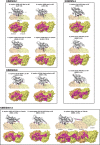
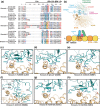
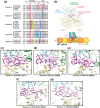
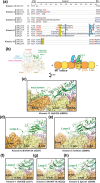
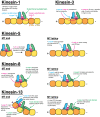
References
-
- Saunders WS, Hoyt MA. Kinesin‐related proteins required for structural integrity of the mitotic spindle. Cell. 1992;70:451–458. - PubMed
-
- Roof DM, Meluh PB, Rose MD. Multiple kinesin‐related proteins in yeast mitosis. Cold Spring Harb Symp Quant Biol. 1991;56:693–703. - PubMed
-
- Desai A, Mitchison TJ. Microtubule polymerization dynamics. Annu Rev Cell Dev Biol. 1997;13:83–117. - PubMed
Publication types
MeSH terms
Substances
Grants and funding
LinkOut - more resources
Full Text Sources
Research Materials

